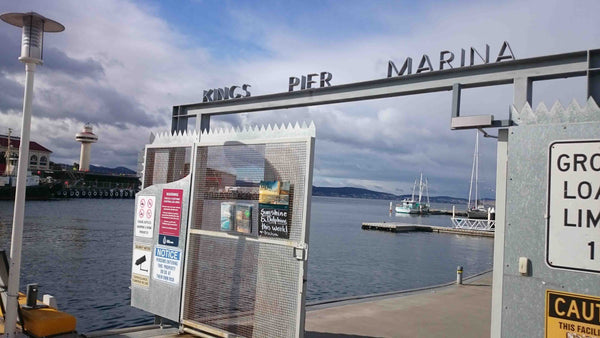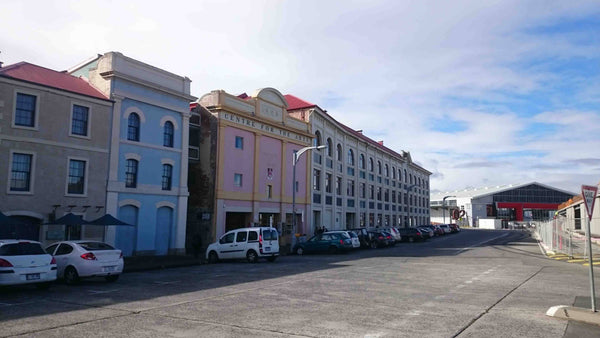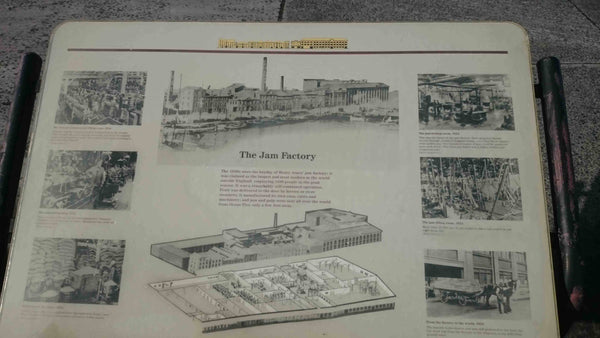
Howard Jones: The Man Behind IXL Jam
Howard Jones was a pioneer of the Australian jam industry, who founded the iconic IXL brand in 1891. His motto was “I excel in everything I do”, and he proved it by transforming a small jam factory in Hobart into a national enterprise that exported its products around the world.
Early life and career
Howard Jones was born in Hobart, Tasmania, in 1862, the son of a carpenter and a dressmaker. He left school at the age of 12 and started working as an errand boy for George Peacock, a local jam manufacturer. He quickly rose through the ranks, becoming the foreman of the factory by the age of 21. He learned the art and science of jam-making from Peacock, who was known for his high standards of quality and innovation.

In 1891, Peacock retired and sold his business to Jones, who renamed it H. Jones & Company. Jones inherited a loyal customer base and a reputation for excellence, but he also faced fierce competition from other jam makers in Tasmania and mainland Australia. He decided to expand his market by opening a branch in Melbourne in 1895, where he purchased a building that became known as The Jam Factory. He also invested in new machinery, packaging, and advertising to increase his production and sales.




IXL brand and success
Jones wanted to create a distinctive brand name for his jams, conserves, and marmalades that would reflect his personal philosophy and ambition. He chose IXL, which stood for “I excel”, and registered it as a trademark in 1898. He also designed a logo that featured a kangaroo and an emu holding a shield with the letters IXL. The logo symbolized his pride in being an Australian manufacturer and his confidence in competing with foreign rivals.
The IXL brand soon became synonymous with quality and taste, and gained popularity among consumers across Australia and overseas. Jones exported his products to New Zealand, South Africa, India, China, Japan, and Europe, earning him several awards and medals at international exhibitions. He also diversified his product range, introducing new flavors and varieties of jams, as well as sauces, pickles, chutneys, vinegar, honey, and fruit juices.
@kieran.wicks #question from @kieran.wicks #OneTownataTime #TouringMusician #Tourdiary #TourGuide #Hobart #IXL #HenryJones #Empire #AustralianHistory #Entrepreneur #IconicBrand #AustralianMade #Didyouknow #Jam #Tasmania #historian ♬ original sound - Kieran.Wicks

The IXL Jam Factory
Jones transformed the old Peacock factory on Hunter Street into a modern and efficient jam factory, employing hundreds of workers and producing millions of tins of jam per season. The factory was located on Hobart’s waterfront, next to Victoria Dock, which gave Jones easy access to ships and railways for transporting his products. He also built a network of orchards and farms around Tasmania, ensuring a steady supply of quality fruits for his jams.
The IXL Jam Factory was more than just a place of work; it was also a social and cultural hub for Hobart. Jones was a generous and progressive employer, who provided his workers with good wages, health care, education, recreation, and housing. He also supported various causes and charities in the community, such as the Salvation Army, the YMCA, and the Hobart Technical College.
The factory was also a showcase of art and architecture, featuring sandstone walls, iron roofs, stained glass windows, and ornate decorations. Jones commissioned many local artists to create paintings, sculptures, and murals for the factory, depicting scenes from Tasmania’s history and nature. The factory also housed a museum, a library, a concert hall, and a gallery, where Jones displayed his collection of art and antiques.
The Jam Factory
The 1920s were the heyday of Henry Jones' jam factory; it was claimed as the largest and most modern in the world outside England, 'employing 1100 people in the peak season. It was a remarkably self-contained operation. Fruit was delivered to the door by lorries or river steamers; it manufactured its own cans, cases and machinery; and jam and pulp were sent all over the world from Ocean Pier, only a few feet away.
The jam-boiling room - This was the heart of the jam factory. Here shadowy figures moved through clouds of fragrant steam, over tiled floors slippery with spilled jam. Two hundred tonnes of jam could be produced here each week. The chief jam boiler was a highly skilled and respected man.
The jam filling room - More than 30,000 tins of jam could be filled and sealed in one eight-hour day.
From the factory to the world, the humble horse-drawn cart was still preferred to the lorry for the short trip from the factory to the wharves, or for deliveries around town.
Behind this impressive facade lay a sprawling complex which not only made jam, preserves and pickles, but the machinery with which they were made, and the tins and cases in which they were packed. The stacks of timber for making came up the Derwent River in small boats.
The Henry Jones empire once included the whole Hunter Street frontage of today, from the large concrete warehouse in front of you down to Davey Street. It was much more than a local jam-making and fruit-exporting firm; it was part of a vast network of allied interests that extended throughout the world.
Henry Jones was the forerunner of today's millionaire.. entrepreneurs. Starting as a lad of 13 he worked his way up from the factory floor. Boundlessly optimistic, shrewd, and a tireless worker, he drove his employees as he drove himself. He was strongly opposed to government regulation of wages and working conditions. He preferred to be the arbiter of what was fair and just. As a result, conditions in his factories were strongly criticised in a 1907 Royal Commission into wages and working conditions in Hobart.
Early in his career Jones had seen that his success depended on control of all the resources he needed in his jam making. He acquired timber concessions and saw milling firms for case making, orchards and hop fields for fruit and hops, coastal and river shipping for transport, interests in coalmines for fuel, and in tin plating and carbide works. He acted as banker and insurance broker for his producers. At times his company's behaviour was intimidating, and public meetings of disgruntled growers expressed strong resentment at his virtual control of the fruit and hop trade in Tasmania.


Legacy and impact
Jones was knighted in 1919 for his contribution to Tasmania's economic development. He became well-known in international financial circles, and established Tasmania's fruit trade with England. He died in 1926, but his partner since 1892, Achalen Palfreyman, continued to run the firm along the same lines until 1965. In 1973 it was taken over by John Elliot's giant Elders company. In 1977 the buildings were stripped and put up for sale. They were bought by the State Government, and now house the Centre for the Arts.
Jones was not only a successful businessman, but also a generous philanthropist and a civic leader. He supported various charitable causes, such as education, health care, sports, arts, and culture. He was also involved in politics, serving as a member of the Tasmanian House of Assembly from 1909 to 1912. He was known for his progressive views on social issues, such as women’s suffrage, workers’ rights, and temperance.
Jones died in 1926 at the age of 64, leaving behind a thriving company that employed over 2,000 people and had an annual turnover of more than £1 million. He was widely mourned and honored as one of Tasmania’s most influential and respected citizens. His company continued to grow and prosper under the leadership of his successors, becoming one of Australia’s largest food processing companies.
Today, the IXL brand is still alive and well, producing jams and other fruit based products for Australian consumers. The original factory in Hobart has been converted into a hotel and an art gallery that celebrate the history and heritage of Henry Jones IXL. The Jam Factory in Melbourne is now a cultural hub that hosts various events and exhibitions. Howard Jones’s legacy lives on as an inspiration for generations of entrepreneurs who aspire to excel in everything they do.
Sources:
1 https://www.henryjonesfoods.com.au/our-brands/ixl-jams/
2 https://en.wikipedia.org/wiki/Henry_Jones_IXL
3 https://www.westtorrens.sa.gov.au/Council/Local-history/West-Torrens-businesses-and-industries/IXL
4 https://australianfoodtimeline.com.au/henry-jones-ixl/


































